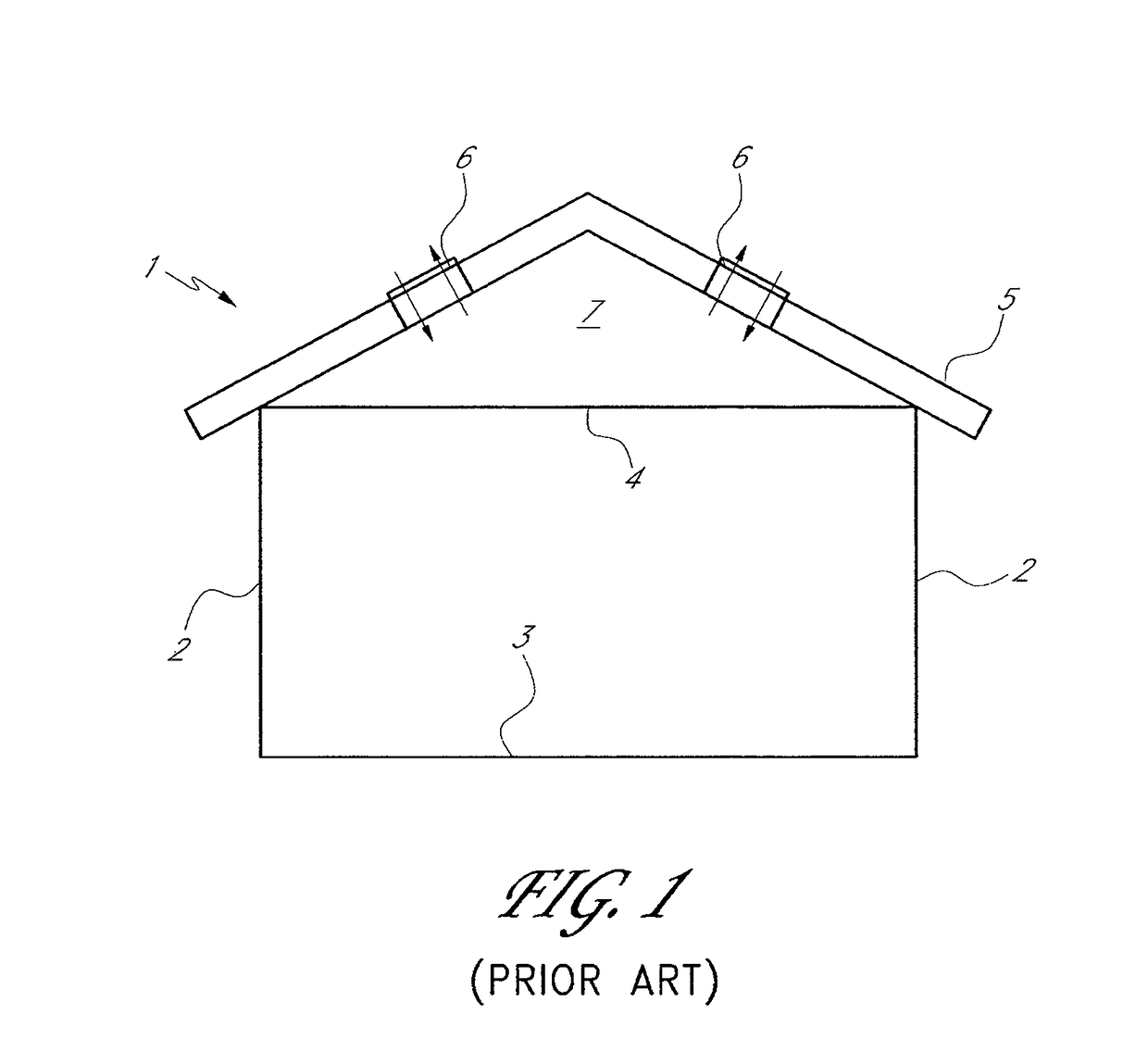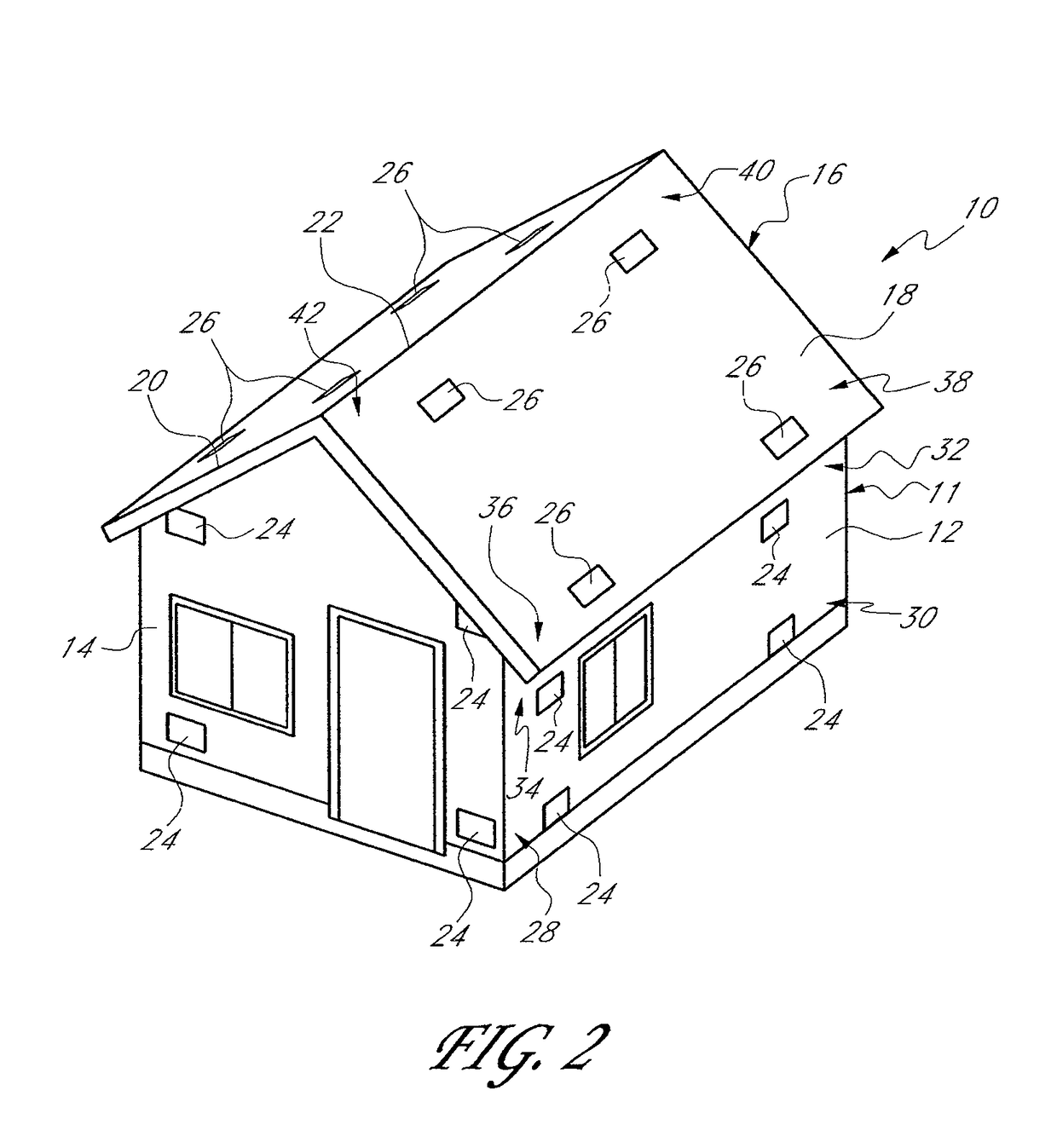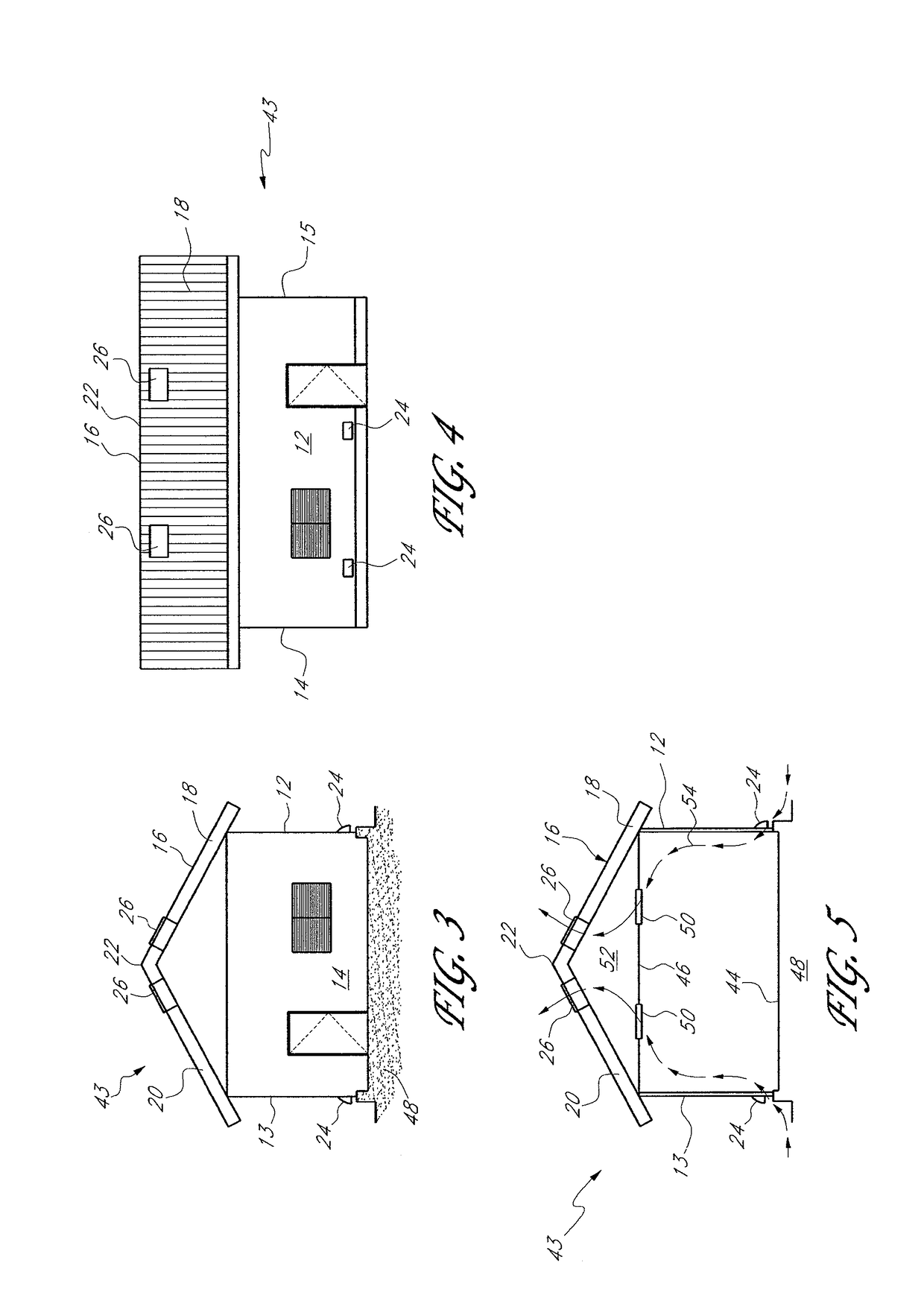Passive ventilation control system
a passive ventilation and control system technology, applied in ventilation systems, lighting and heating apparatus, heating types, etc., can solve the problems of not being able to effectively ventilate the whole building, the remaining area of the house is usually not passively ventilated, and the stack vents are relatively small
- Summary
- Abstract
- Description
- Claims
- Application Information
AI Technical Summary
Benefits of technology
Problems solved by technology
Method used
Image
Examples
Embodiment Construction
[0041]Conventional systems for passive ventilation of buildings are limited in their ability to adequately ventilate a building. For example, while passive stack ventilation provides some passive ventilation of a building, it has been restricted to kitchens, bathrooms, and / or laundry rooms. While the stack vents may extend through other (non-pollutant) rooms of the building, they do not permit venting of such rooms because the stack vents do not fluidly communicate with such rooms. Also, passive stack ventilation is somewhat restricted because it involves the flow of air through elongated stack vents, which sometimes include turns and irregular configurations. Adequate ventilation through the stack vents is often dependent upon suction at the upper ends of the stack vents, due to a venturi effect caused by winds above the building. The stack vents inhibit the building from “breathing” freely. Thus, buildings having stack vents, perhaps in combination with vents in the floor or exter...
PUM
 Login to View More
Login to View More Abstract
Description
Claims
Application Information
 Login to View More
Login to View More - R&D
- Intellectual Property
- Life Sciences
- Materials
- Tech Scout
- Unparalleled Data Quality
- Higher Quality Content
- 60% Fewer Hallucinations
Browse by: Latest US Patents, China's latest patents, Technical Efficacy Thesaurus, Application Domain, Technology Topic, Popular Technical Reports.
© 2025 PatSnap. All rights reserved.Legal|Privacy policy|Modern Slavery Act Transparency Statement|Sitemap|About US| Contact US: help@patsnap.com



